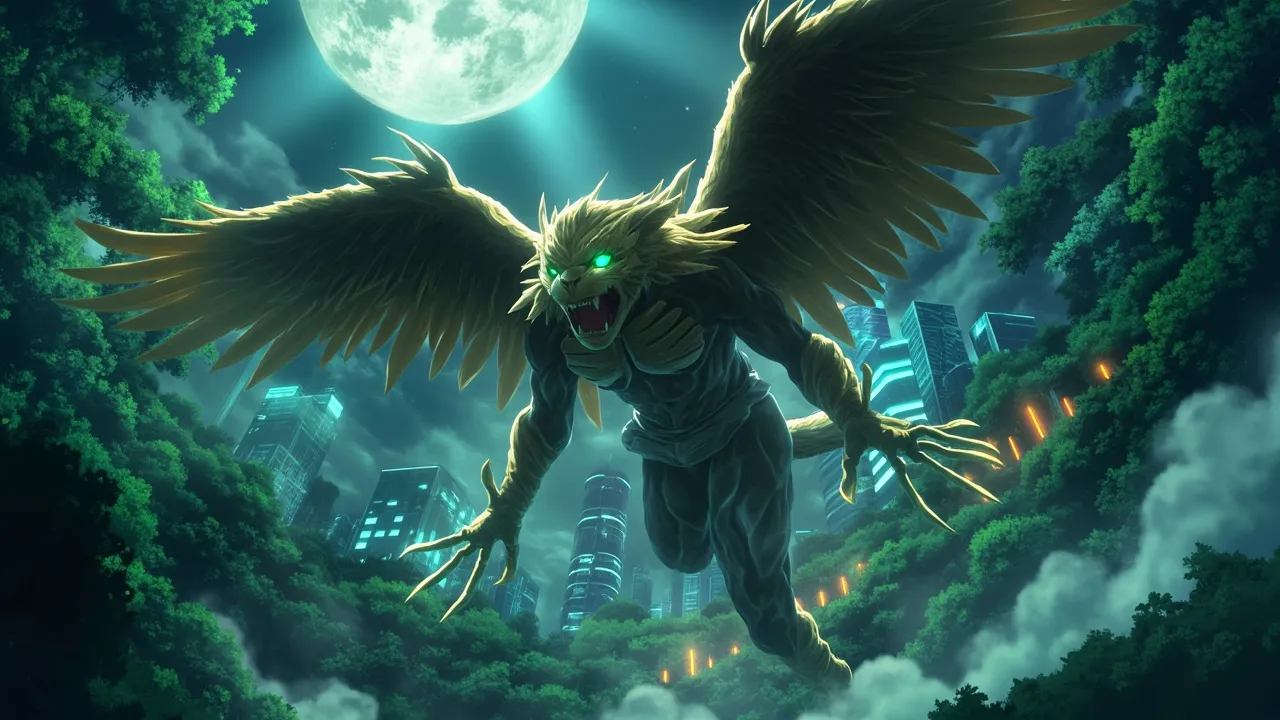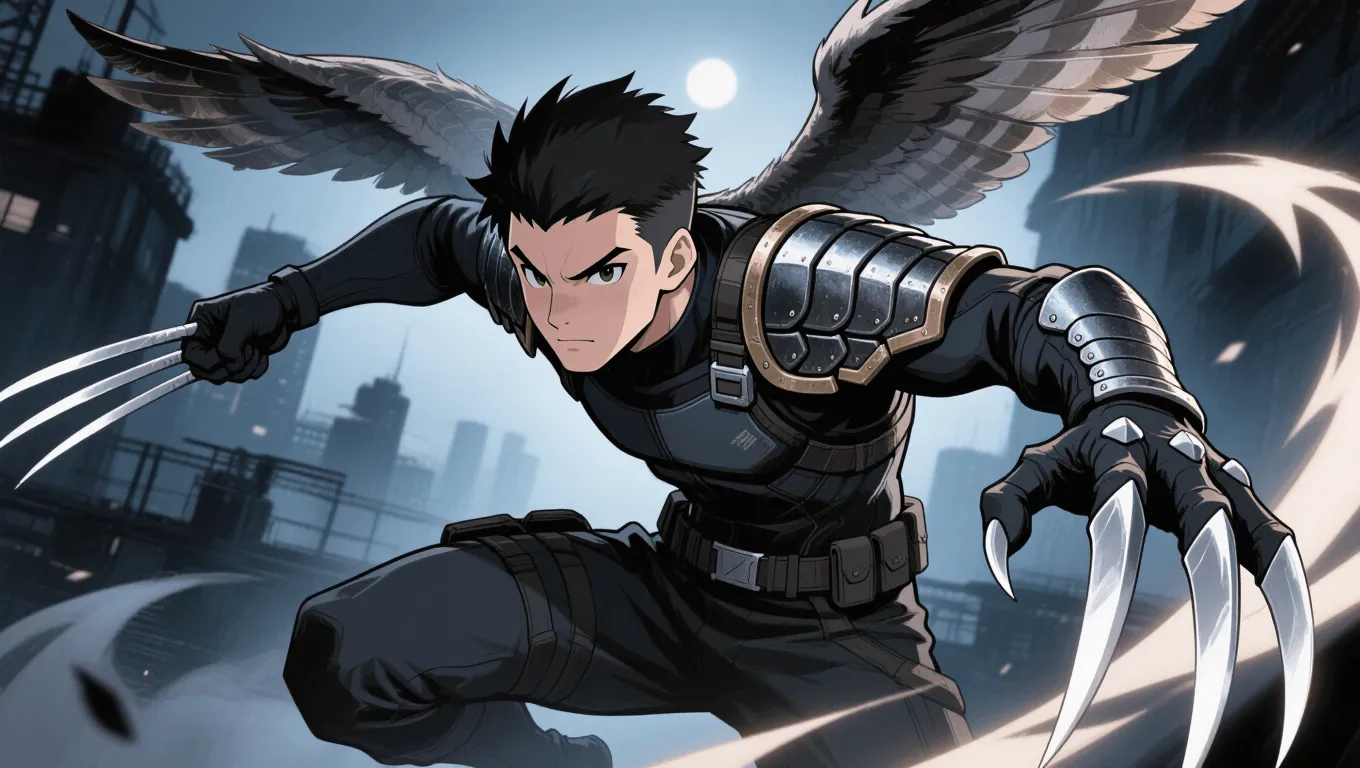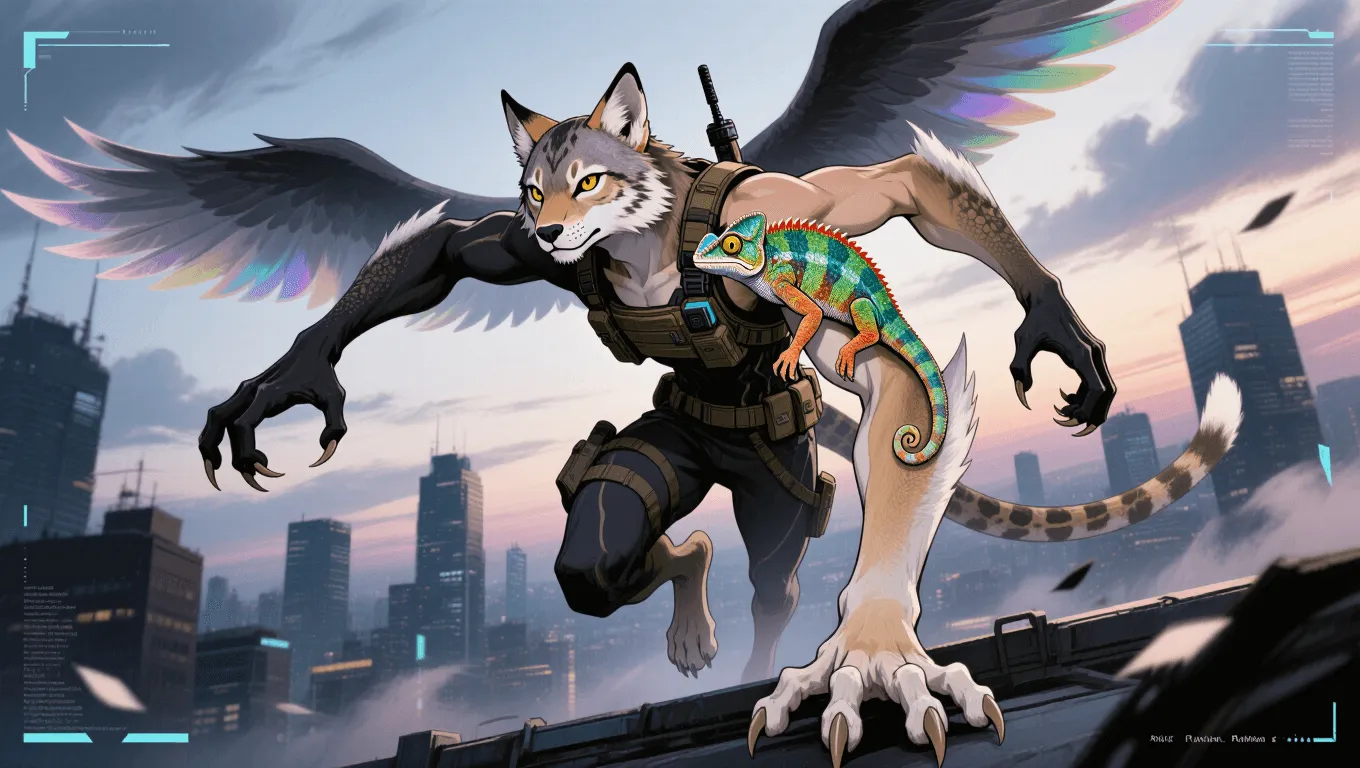Animal Hybridization

Animal Hybridization Video Demo 🎬
Table of Contents
- Animal Hybridization Video Demo 🎬
- What Is Animal Hybridization
- Core Abilities of Animal Hybridization
- Application / Tactical Advantages in Combat
- Level: Level 1 🏙️, Level 2 🌇, Level 3 🌃
- Limitations of Using the Animal Hybridization
- Weakness Against What Other Superpowers
- Synergistic Power Combos
- Known Users
Animal Hybridization is a transformative superpower that lets a user combine human physiology with traits of one or more animals, creating a living chimera on demand. This power sits between shapeshifting and biological manipulation, enabling selective adoption of claws, fangs, wings, scales, gills, armored hides, or even compound forms that merge multiple species. In fantasy and superhero settings, Animal Hybridization is prized for its adaptability, stealth, mobility, and battlefield control. Readers who enjoy cataloging abilities can explore more entries in the superpower lists, or discover a new ability at the random superpower generator.
What Is Animal Hybridization
Animal Hybridization describes the capacity to morph into hybrid states that blend human cognition with bestial anatomy and instinct. Unlike full animal shapeshifting, hybridization preserves a roughly humanoid frame—bipedal stance, tool use, and speech—while layering functional animal attributes. Users might adopt the sonar and membranous wings of a bat, the electroreception of a shark, the prehensile grip of a primate tail, or the shock-resistant keratin of a rhinoceros beetle. Advanced users mix and match traits (e.g., raptor talons plus cephalopod camouflage), optimizing a bespoke loadout for a mission.
Common related terms include hybrid physiology, zoanthropy, therianthropy, chimera creation, cross-species biofusion, gene splicing, beast form, animal morphing, and bestial transformation. While some origin stories frame it as magic, mutation, or divine blessing, science-fiction variants often attribute the power to bioengineering, programmable matter, or adaptive nanites.
Core Abilities of Animal Hybridization
Selective Trait Manifestation
Users can express singular traits—claws, night vision, scent tracking, quills, or armored plates—without a full-body change. This precision keeps silhouettes inconspicuous while delivering tactical edges.
Composite Chimerism
Beyond one-to-one morphs, adept users can stack traits from multiple species: mantis shrimp forelimb acceleration with turtle-shell plating, or owl silent-flight feathers combined with feline balance. Composite forms excel in niche scenarios where a single animal would be suboptimal.
Enhanced Senses and Neuro-Instincts
Eagle-grade acuity, canine olfaction, bat echolocation, shark electroreception, and pit-viper infrared perception expand situational awareness. Hybrid neural overlays can bring reflexive hunting patterns, superior proprioception, and environmental mapping.
Locomotion Upgrades
Wings for short-range flight or gliding, webbed extremities and gills for aquatic speed, digitigrade legs for sprinting and leaping, or gecko setae for vertical traversal. Mobility becomes multi-terrain.
Natural Weaponry and Bio-Armor
Talons, horns, antlers, beaks, venomous spurs, stings, barbs, and exoskeletal plating offer scalable offense and defense. Keratin and chitin augment blunt- and slash-resistance.
Regenerative and Adaptive Physiology
Some variants grant rapid healing resembling lizard tail-regrowth or planarian-like tissue repair. Adaptive thermoregulation and temporary toxin filtration can emerge from amphibian or insect templates.
Partial vs. Full Hybrid States
Partial forms maintain most human features with targeted augmentations; full hybrids approach anthropomorphic animals with extensive structural change. Switching between states balances stealth, intimidation, and performance.
Application / Tactical Advantages in Combat
Multi-Role Modularity
Animal Hybridization behaves like a living toolkit. Before or during a fight, users swap traits for reconnaissance, infiltration, grappling, crowd control, or escape. Owl stealth for insertion, octopus chromatophores for camouflage, then rhino plating for exfil—one operative, many roles.
Terrain Domination
Hybridization neutralizes environmental disadvantages. Amphibious morphs control river crossings; burrowing traits create trenches or ambush tunnels; gliding wings secure rooftops and cliffs. In vertical cities or cavern complexes, gecko adhesion and bat sonar are decisive.
Shock and Psychological Warfare
Predatory displays—pupil dilation, crest flares, hissing, or rattle-like warnings—can trigger fear responses. Quill barrages and sudden limb morphs disrupt enemy composure, buying crucial seconds.
Non-Lethal Control
Constriction coils, webbing analogs, or sticky gecko secretions enable capture with minimal harm. Amphibian toxin secretions can be down-tuned for anesthetic effects.
Sensor Fusion Recon
Combining electroreception, echolocation, and scent rails allows tracking through walls, smoke, or darkness. A hybrid scout can outclass drones in cluttered or jammed spaces.
Level: Level 1 🏙️, Level 2 🌇, Level 3 🌃
Level 1 — Instinctive Adopter
Beginners manifest a few familiar traits for short durations. Claws, low-light vision, and modest dermal armor are common. Transformations may be slow, and stamina costs are noticeable. Tactical use focuses on ambush, tracking, and quick escapes rather than prolonged fights.

Capabilities at this stage
-
One trait active at a time (e.g., talons or night vision)
-
Minor mobility boosts (short leaps, improved grip)
-
Basic sensory enhancement (keen smell or hearing)
Training focus
-
Breathing and heart-rate control to trigger/stop morphing
-
Short, repeatable drills to build tolerance
-
Learning safe morph “defaults” for emergencies
Level 2 — Composite Specialist
Intermediate users stack two to three traits and shift mid-combat. They can tailor forms to mission phases: silent entry (owl), takedown (feline claws), and armor (armadillo plating).

Capabilities at this stage
-
Multi-trait combos for minutes at a time
-
Reliable mobility augments (gliding, wall-scaling, swift swimming)
-
Limited regeneration or toxin management
Training focus
-
Loadout planning per environment (urban, desert, rainforest, aquatic)
-
Countermeasure awareness (sonics, cryo, fire hazards)
-
Team integration—cover roles, hurdle clearing, and extraction
Level 3 — Apex Chimera
Masters rewrite their silhouette fluidly, fusing several species while maintaining human cognition and tactical reasoning. Reflexes, senses, and durability scale dramatically.

Capabilities at this stage
-
Rapid-state cycling with negligible lag
-
High-end senses (sonar + electroreception + thermal) in parallel
-
Specialized weapons (barbed projectiles, venom modulation)
-
Strategic morph memory—preconfigured “forms” for known threats
Training focus
-
Neuro-impulse discipline to prevent feral override
-
Ethics in urban deployment and crowd safety
-
Long-duration ops with adaptive thermoregulation and nutrition protocols
Limitations of Using the Animal Hybridization
-
Metabolic Load
Morphing burns energy quickly. Without caloric reserves, users risk hypoglycemia, muscle tremors, or partial transformations that compromise structural integrity. -
Cognitive Drift
Instinct overlays can bias decision-making (territoriality, pack behavior, startle reflex). Unchecked, this erodes judgment under stress. -
Morph Lag and Control Windows
Early-stage users suffer latency when switching traits. In tight engagements, a half-manifested wing or unsealed gill can be dangerous. -
Anatomical Conflicts
Combining traits from incompatible ecologies (e.g., heavy exoskeleton with large flight surfaces) may impair movement or balance unless expertly configured. -
Environmental Dependencies
Aquatic traits excel in water but waste energy on land; desert-adapted forms overheat in humid jungles. Optimal choices depend on climate and terrain. -
Equipment Interference
Armor, uniforms, or harnesses can tear during rapid morphs. Weapon calibration (trigger reach, recoil) may not fit altered hands or forearms. -
Medical and Ethical Constraints
Regenerative features complicate surgery and diagnostics. Civilian contexts may require de-escalation training to avoid panic due to monstrous appearances.
Weakness Against What Other Superpowers
-
Sonic Manipulation and Echolocation Jammers
High-decibel blasts disorient bat-like senses; tuned sonics can disrupt balance and fine motor control. -
Cryokinesis
Cold stuns cold-blooded or thin-blooded morphs, slows nerve conduction, and stiffens membranes—especially in amphibian or reptilian configurations. -
Fire Manipulation and Heat Bursts
Fur, feathers, and chitin are vulnerable to ignition or thermal shock; overheated air also collapses lift in winged forms. -
Poison/Gas Control
Enhanced respiration rates during exertion increase toxin intake; gas controllers can exploit this vulnerability. -
Technopathy and Exosuit Hackers
If gear is required to stabilize morphs, hostile control can lock or desync the stabilizers, forcing painful reversion. -
Telepathy/Emotion Control
Feral overlays make users susceptible to fear spikes or rage triggers; calm-inducing or panic-inducing powers can hijack instinctive responses. -
Biomolecular Suppression
Powers that inhibit gene expression or cellular signaling can halt morphing mid-process, causing collapse or partial forms.
Synergistic Power Combos
-
Accelerated Healing
Speeds recovery from muscle tearing and joint stress caused by frequent transformations; pairs well with high-impact claws or horns. -
Adaptive Camouflage/Invisibility
Octopus-inspired chromatophores plus active light-bending yields elite stealth indoors and underwater. -
Kinetic Absorption
Converts impacts absorbed by chitin or scales into counterstrikes—ideal for front-line hybrids. -
Size Manipulation
Shrink for infiltration with insect traits; enlarge to leverage rhino or bear morph strength in crowd control. -
Tactical Telepathy (Animal Empathy Variant)
Coordinates allied fauna for distractions and recon while the user morphs into complementary roles. -
Environmental Control (Aerokinesis/Hydrokinesis/Geokinesis)
Air currents enhance gliding; water shaping amplifies aquatic pursuit; terrain shaping supports burrow ambushes. -
Sensory Augmentation Tech
HUD overlays to reconcile multispectral inputs (thermal, electro, sonar) reduce cognitive overload.
Known Users
-
Kirk Langstrom (Man-Bat) — A scientist who becomes a humanoid bat, illustrating the fusion of human intellect with chiropteran traits.
-
Curt Connors (Lizard) — Transforms into a reptilian hybrid, showcasing regeneration and cold-blooded strengths with notable cognitive risks.
-
Tigra — A cat-human hybrid whose agility, senses, and claws exemplify feline-oriented hybrid physiology.
-
Killer Croc — Displays crocodilian traits including dermal armor, aquatic adaptation, and powerful jaws in a humanoid frame.
-
Beast (Hank McCoy) — A blue-furred mutant whose enhanced strength, acrobatics, and senses demonstrate adaptive hybridization over time.
For broader context or to browse related abilities, readers can continue through the evolving catalog at superpower wiki or experiment with new ideas using the random generator on the homepage random superpower generator .
